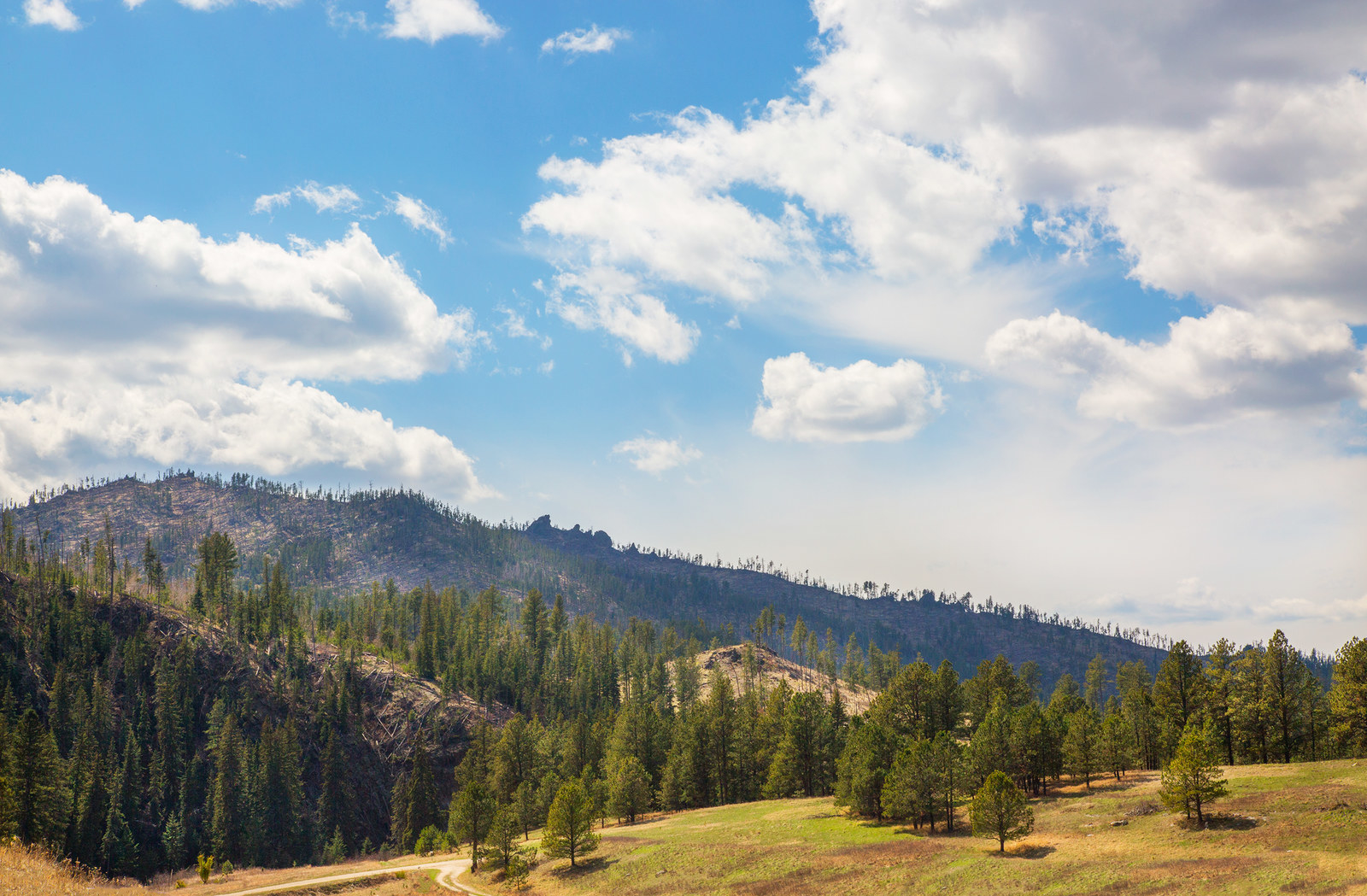
Flying into Rapid City, the second-largest city in South Dakota, I was stunned by how level the landscape looked from my plane window. Being from California, I’m used to rocky cliffs cradling sapphire coasts. Now, living in New York, it’s all metallic gleam and skyscrapers with little reprieve. This startlingly placid evenness was something new altogether.
My parents didn't take me on a lot of trips within the US as a kid. And even after moving to New York as an adult, I widely traveled internationally and often between the coasts of the US, but never in between. I had no friends in the Midwest to show me around, and no occasion ever presented itself to warrant a visit. So when I was given the chance to lay eyes on Mount Rushmore, it seemed like the perfect opportunity to explore a small part of the American Midwest.
But I would soon come to find much more depth to Western South Dakota than its great expanse of grasslands and ranchlands. Complex, rich layers of history build upon one another beneath the region, revealing cultural paradoxes, geological majesties, incredible food and beer, and folks who put real elbow grease into their community — all centered around small but bustling Rapid City.

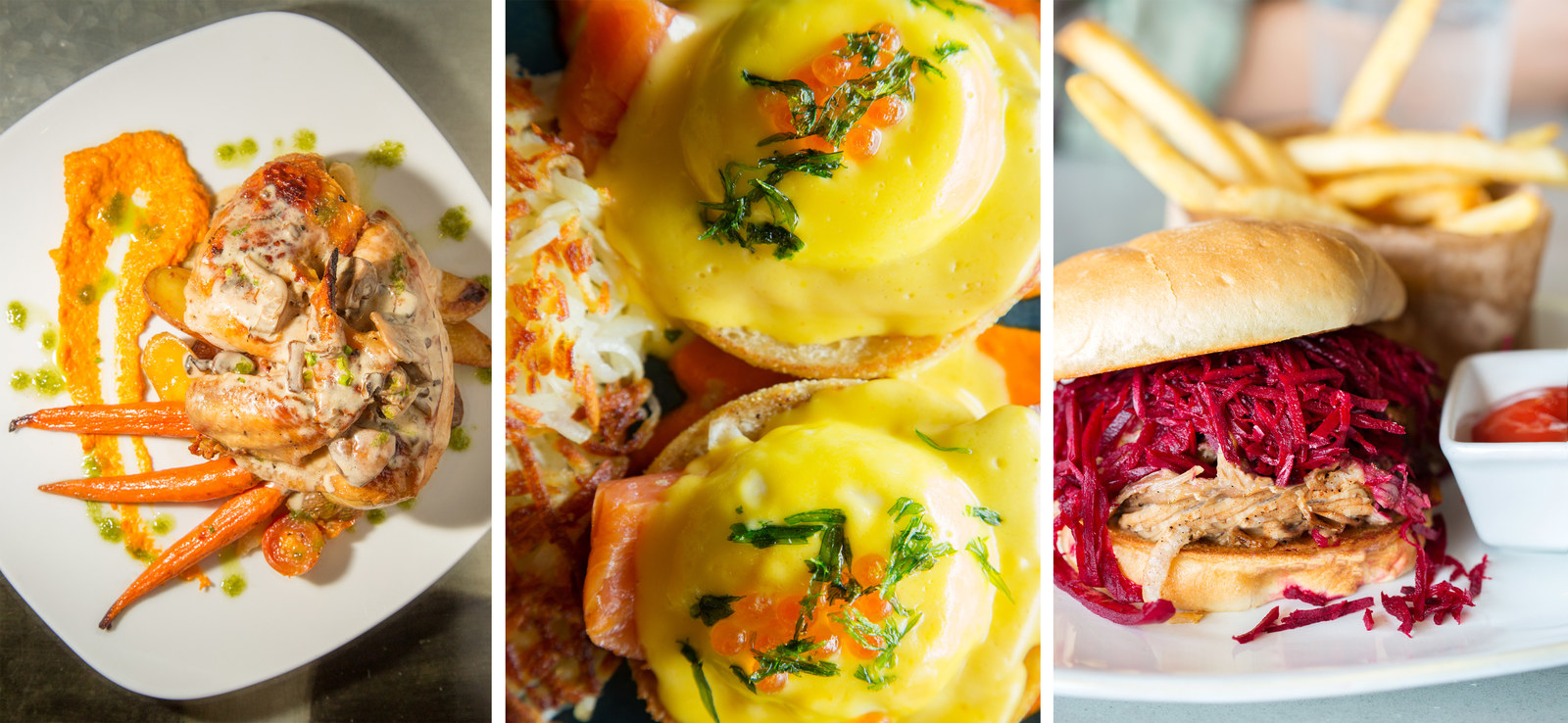
We began with the very quaint, historic downtown area of Rapid City, which is lined with restored old buildings and easily explored on foot. After passing through the green public space in Main Street Square at its center, we perused a smattering of antique stores, record shops, and small art galleries. Along the way, we made note of each member of the City of Presidents we came across on the street, a collection of life-size bronze statues of all our nation’s past leaders.
Then we came upon Tally’s Silver Spoon, where we could have breakfast for lunch, nestled on a corner in the heart of downtown Rapid City. Cordon Bleu–trained chef and owner Benjamin Klinkel breathed new life into this '30s diner. He kept the name, which was once owned by a Tally Winter. But it's now what he calls a "fine diner," featuring modern dishes like the popular Duck Duck Goose, a sunny-side egg with duck confit, foie gras, and gooseberries, and old standbys like benedicts and pancakes. But don't be fooled by the simpler items on the menu — if they made pancakes in heaven, this would be it. "They're just a vehicle for syrup and butter," Klinkel surmised. But each bite of his superb blueberry pancake was a ride I earnestly savored.
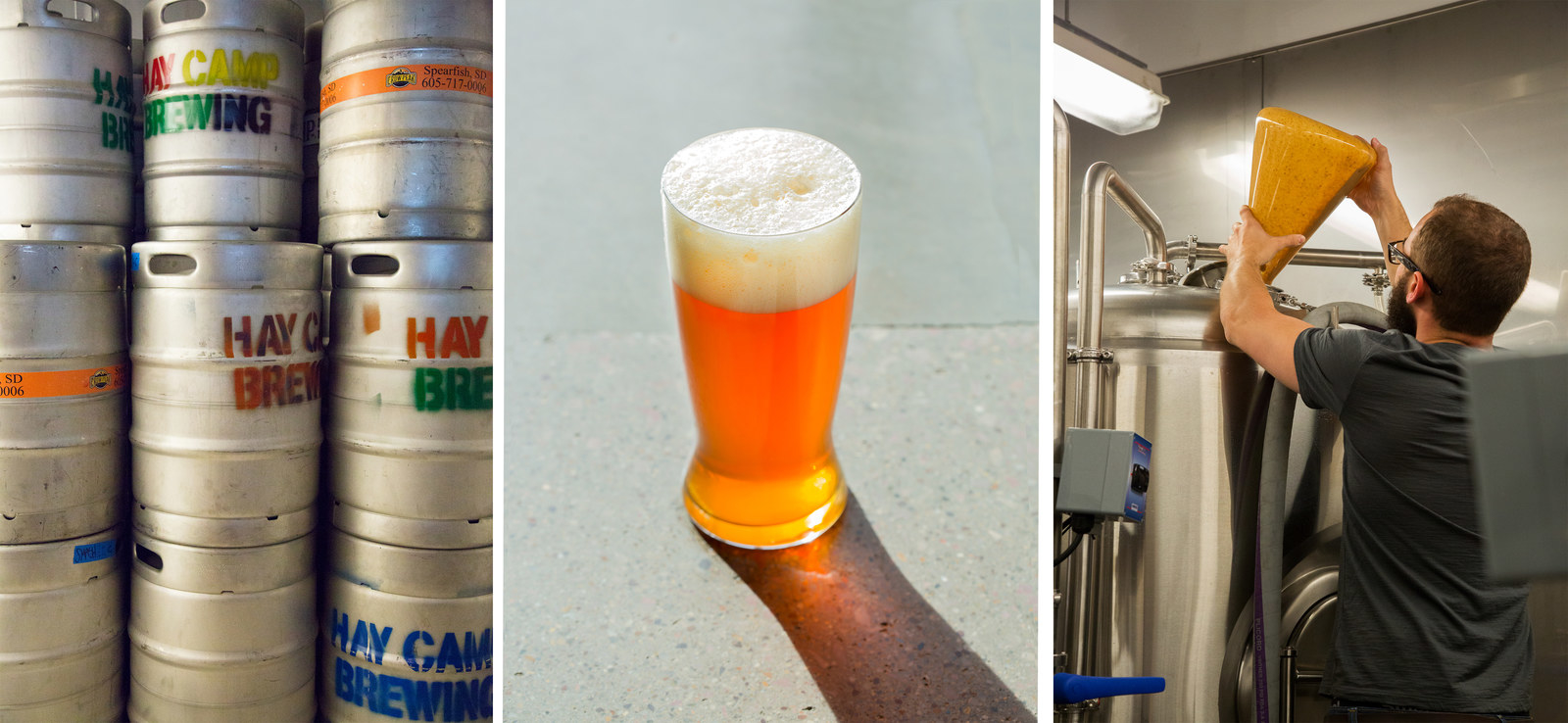
After our hunger was satiated, we looked to quench our thirst at the newly reopened and relocated Hay Camp, one of many breweries in the area. Hay Camp was named after Rapid City's original moniker from the late 1800s. Owned and operated by Karl Koth and Sam Papendick, two high school buddies who bonded over homebrewing, the open, expansive space buzzed with friends and customers vying for their attention.
We sipped hoppy Best Bitters, malty Better Browns, and Mothers Temptation, an IPA bursting with the fragrance of pineapple, named after Koth's then-pregnant sister-in-law who resisted the brew despite the enticing aroma. "Beer is the perfect way to bring people together," says Koth, who plans to use some of their space as a community music space for an audio arts nonprofit.

Next on our agenda was the Downtown staple of Prairie Edge, located in a bright, open space that was once a saloon frequented by the cavalry. With its walls layered with everything from cradleboards to bison heads to the traditional quillwork of the Northern Plains peoples, the store now showcases native culture and art with almost overwhelming visual delight. Amongst the headdresses and hatchets, information cards describe the local artists and their backgrounds, detailing their passions and where they learned their craft. The focus, of course, is centered on the art of the local native people, the Lakota, one of the seven Sioux tribes.

With just a few hours of daylight left, we ventured an hour east of Rapid City to Badlands National Park. Driving up to it, you might wonder if you're on the right road. Nothing looms in the horizon as you'd expect. Then, suddenly, the ground breaks away to expose the Badlands beneath: an expanse of 244,000 acres of buttes, pinnacles, and spires, revealing bright bands made up of volcanic ash, fossilized soil, sandstone, and both marine and mammal fossils. Once a flat floodplain, these layers of sediment have been exposed over the years by determined rivers carving their paths through the rocky depths.
This vast area is best navigated by car, from which we listened to calls of songbirds echoing, their vocalizations seemingly digital — surreal and crisply clear — enhanced not by some studio soundboard but by the eroded walls of the near-alien landscape. The air also tasted clean on our hike along the Notch Trail, despite the dusty, clay dirt kicked up by us and the occasional chipmunk zigzagging across our path.
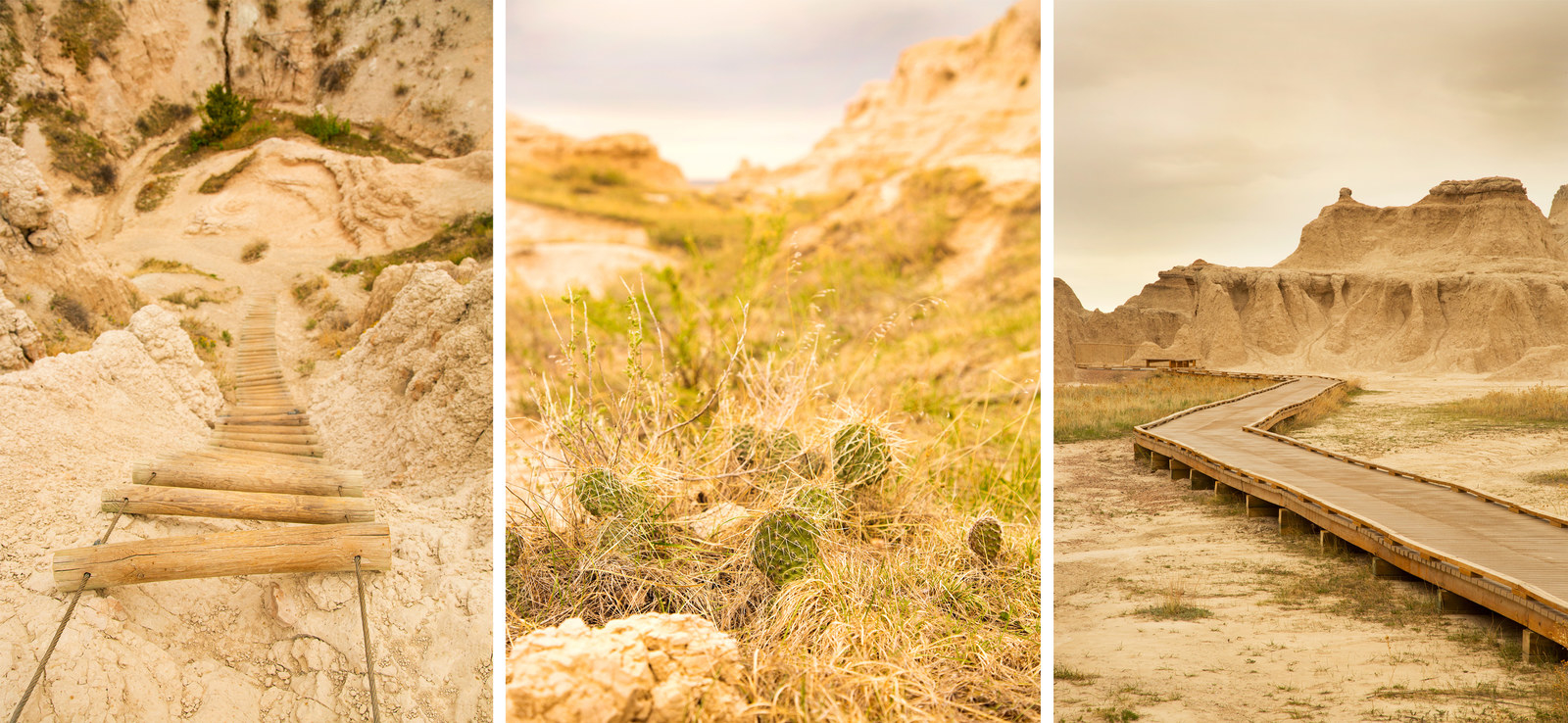
As daylight waned, we returned to Rapid City for dinner at (kōl), named for its strictly coal oven–fired dishes. The open kitchen dished out plates like beet salads with blue cheese and candied walnuts, medium-rare bison skewers, and perfectly roasted chicken. And we didn't abstain when it came to its clean, signature cocktails in unique presentations like the cotton candy–adorned mojito.
After dinner, we headed downstairs for a truly retro, nostalgia-inducing experience at Press Start. This vintage arcade bar is stocked with a unique selection of local canned beers and both retro and modern video games, including painstakingly restored pinball machines from the '70s. Prepare to stay longer than you intend, even if you have an early morning the next day to see a grand monument.

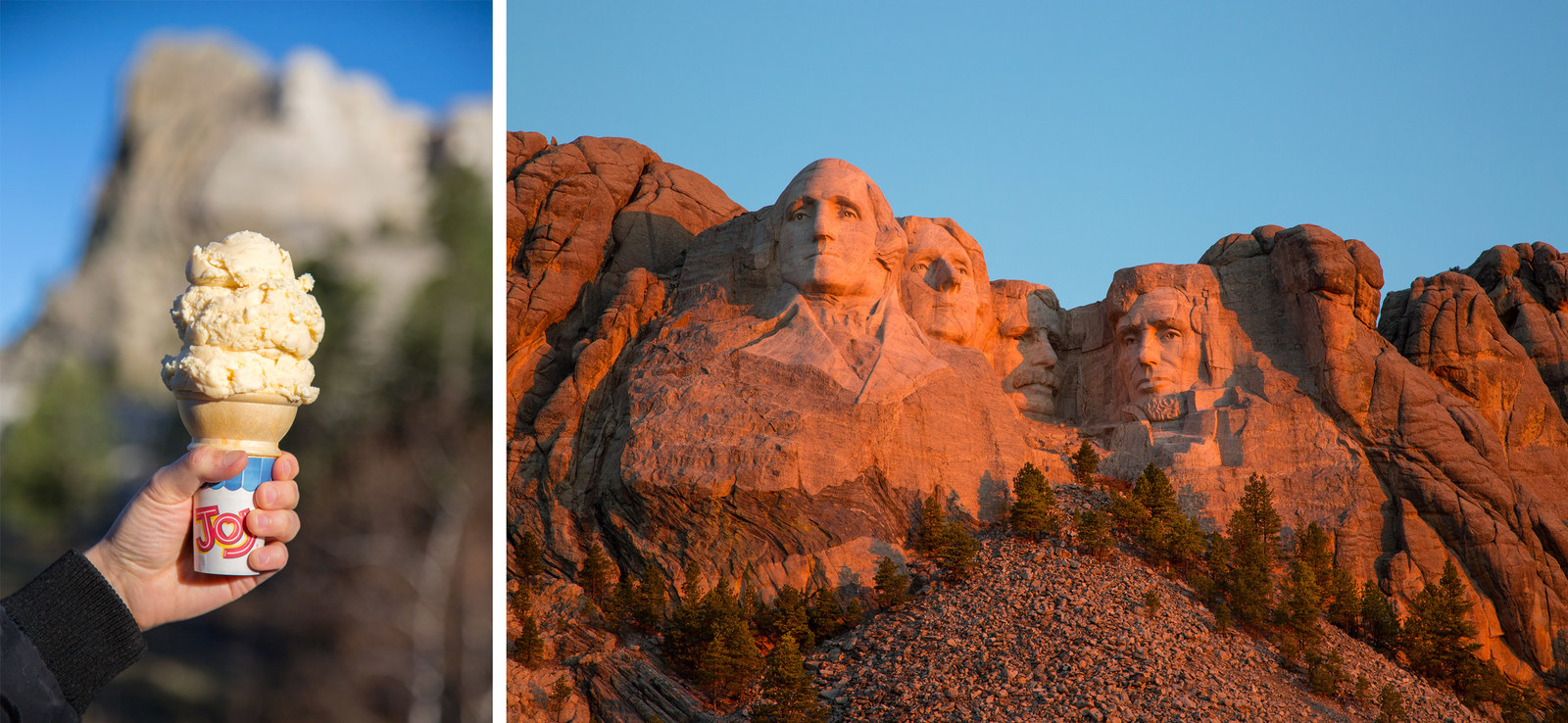
Because the faces of Mount Rushmore are east-facing and my photographer ambitious, we decided to race the sun to the Black Hills for prime light. Climbing out of bed was a feat, but the drive southwest from Rapid City was short, and the sunrise on Mount Rushmore was a sight to behold even with sleep-encrusted eyes. The early dawn light cast Washington, Jefferson, Roosevelt, and Lincoln in a spectacular fluorescence.
On this crisp, quiet morning, we wandered the flag-lined Grand View Terrace with relative solitude. As the light gradually muted its orange hue, we watched the monument transform into its postcard-familiar chalky white while we ate a breakfast of ice cream cones made with Thomas Jefferson's own recipe at the on-site Carver's Cafe.
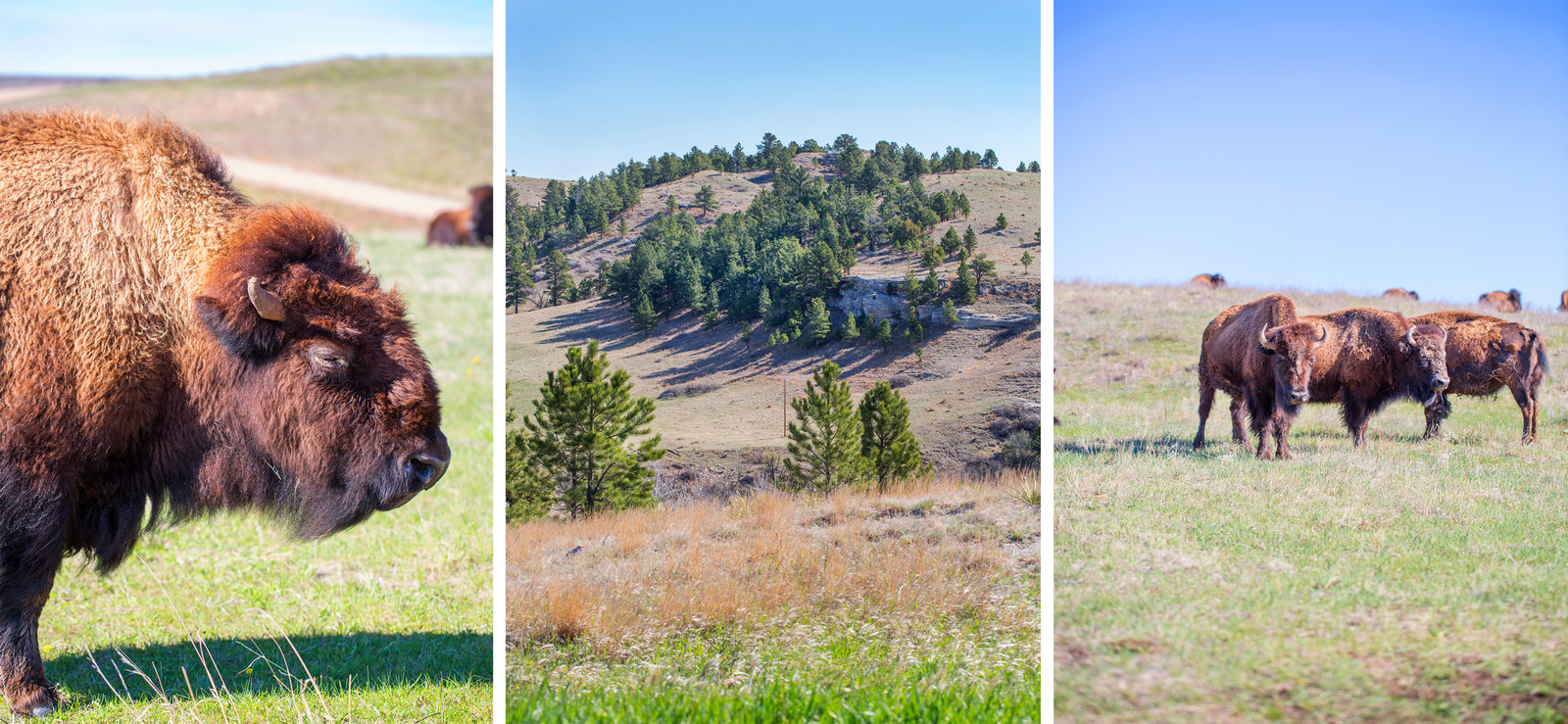
Our next stop was the 18-mile Wildlife Loop of nearby Custer State Park, home to 1,300 free-roaming bison. So many, in fact, we had to maneuver slowly and carefully through grazing herds (twice), and so near that we felt compelled to roll our windows up. The gentle beasts let us pass with no trouble. Deer, pronghorn antelope, and an entire field of chirping prairie dogs let us pass with similar ease. Less precious with our personal space were the burros, one of which reached into my open window with his curious muzzle.
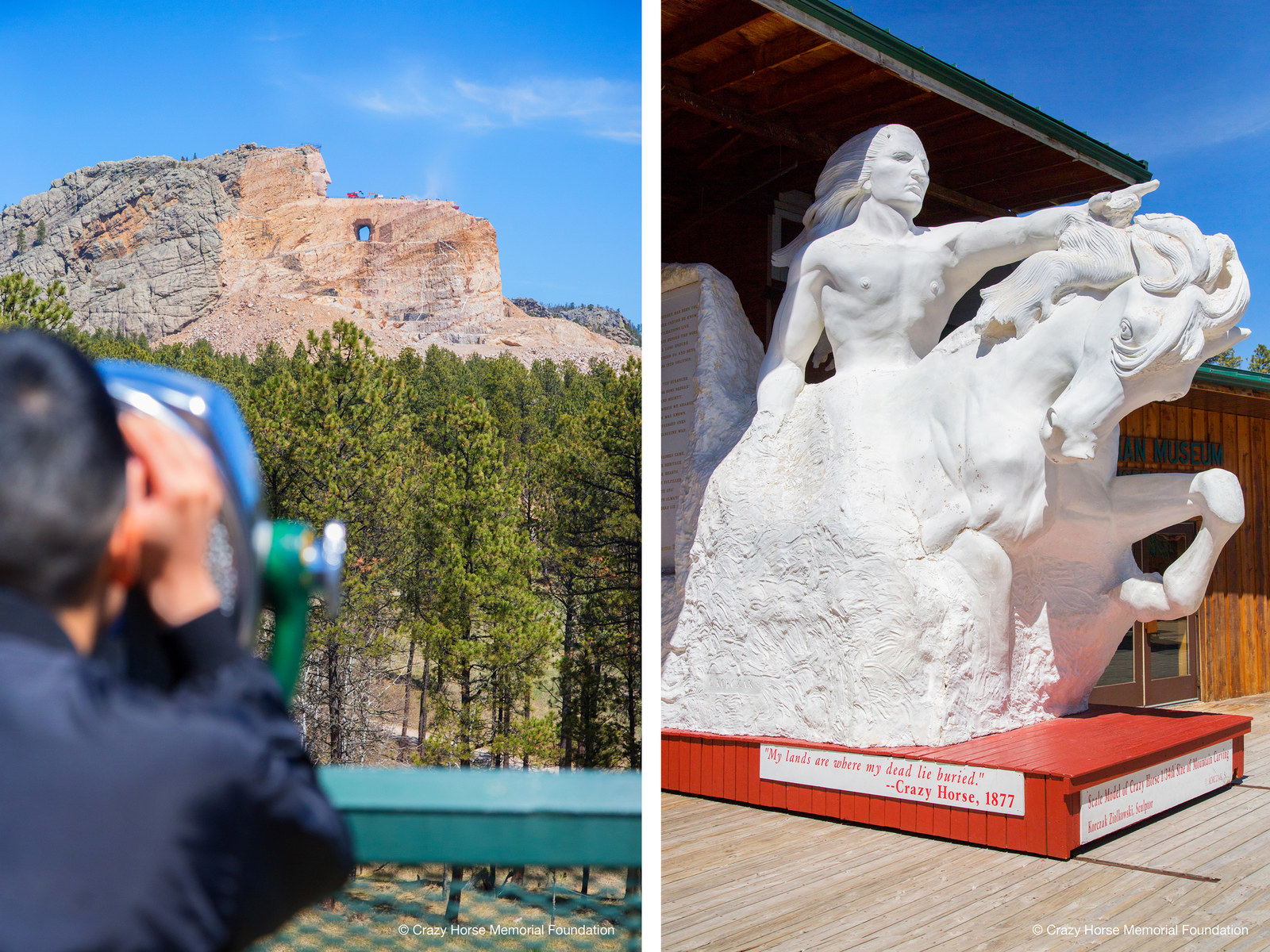
On the heels of Custer State Park, we visited yet another monumental sculpture of a different kind of hero: Lakota leader and warrior Crazy Horse, notorious for his victory at the Battle of Little Big Horn against General Custer (the namesake of the aforementioned state park). The larger-than-life Crazy Horse was chosen by Lakota chiefs to pay homage to the culture and heritage of Native Americans. Fittingly, Crazy Horse Memorial itself, on which construction began in 1948, is the world's largest sculpture currently in progress.
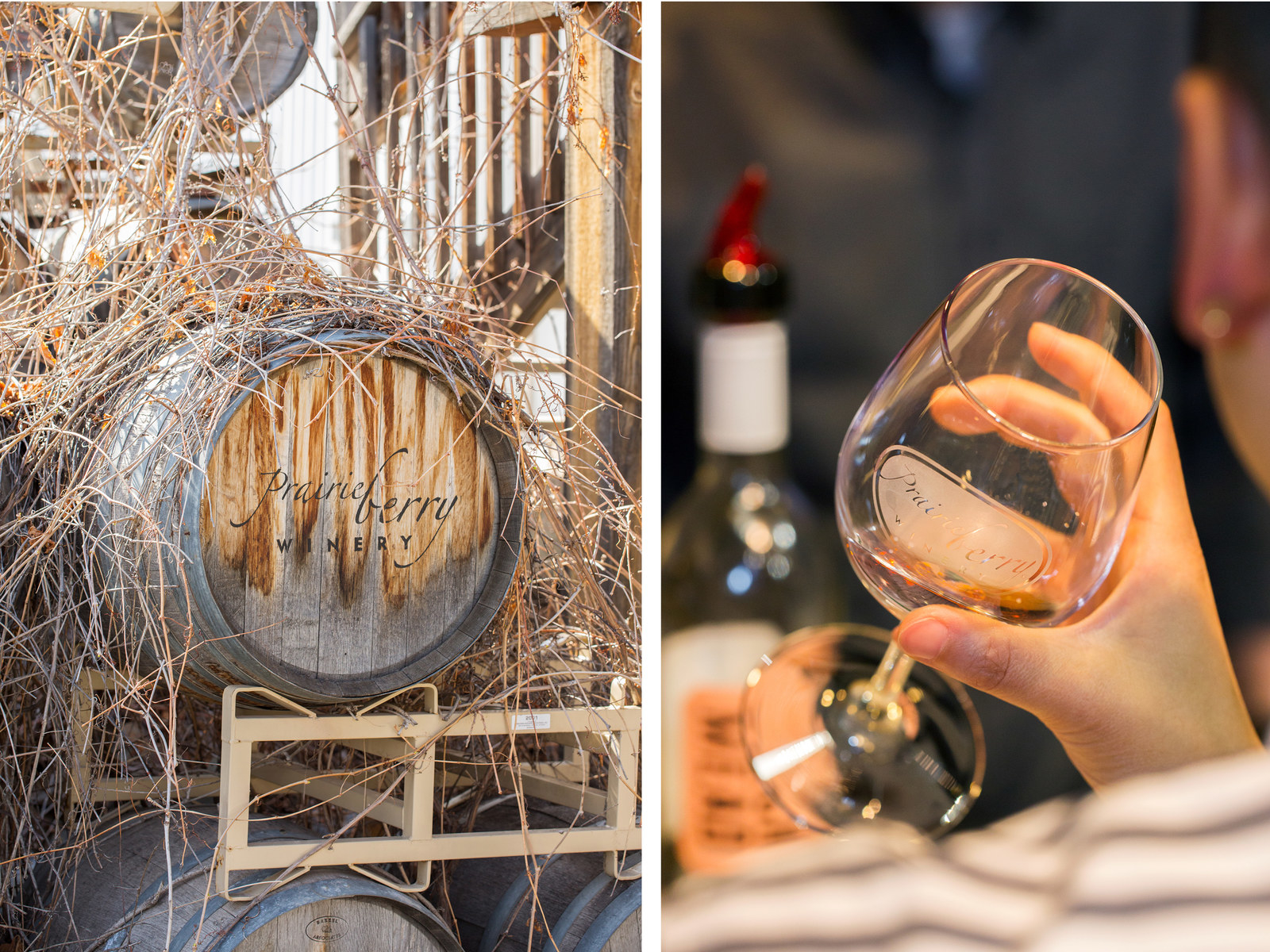
In nearby Hill City, we were pleased to discover a craft brewery and a winery, both run by brewmaster and winemaker Sandi Vojta. Our first stop was Prairie Berry Winery for lunch and a wine tasting. Aside from a large selection of award-winning sweet and fruity farm wines (it has won over 1,000 awards for its vinos) its menu includes toothsome open-faced sandwiches with chevre and fig, artisanal charcuterie and cheese boards, and aromatic wild mushroom flatbread pizzas.
Next door, Miner Brewing beckoned us to continue imbibing. Opened in 2013 with a nod to the early Black Hills settlers and a desire to create a "unique South Dakota experience," Miner's beers retain traditional, European flavor profiles but boast regional touches like chokecherries and prickly pears from South Dakota. A must-try is the Dr. Valentine, an imperial red IPA that's a favorite of the employees and already a staple around Rapid City.
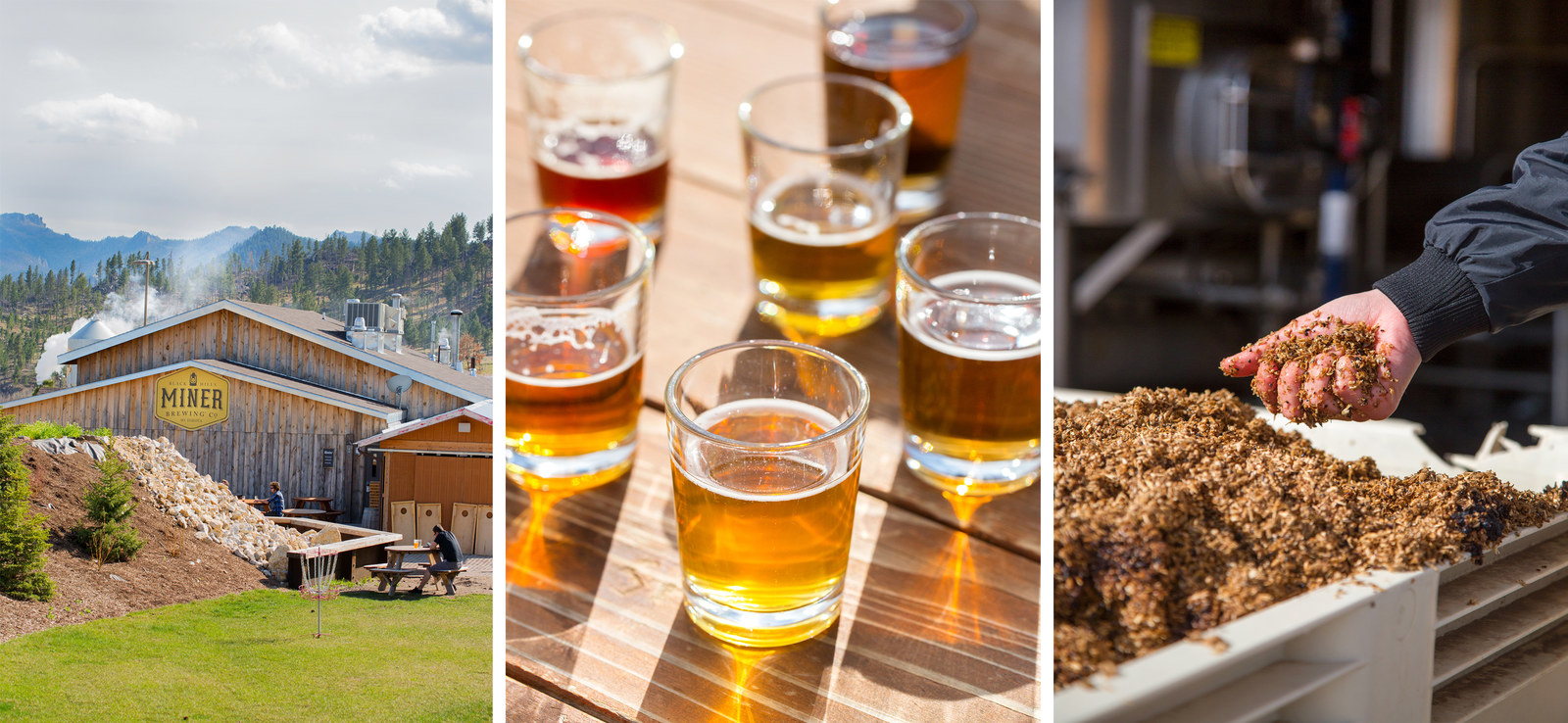
Upon returning to Rapid City, we refueled from our day with plenty of protein at Dakotah Steakhouse. A true Western steakhouse, Dakotah also serves game and fish like elk and walleye. We opted for a classic Cowboy Bone-In Rib-Eye, and despite the protests of our full bellies, we were persuaded by a sweet we'd never heard of: South Dakota's state dessert, kuchen. The dense and creamy cake finished with berry compote and dreamy, freshly whipped cream may have been worth the trip alone. We ended our evening with a nightcap at the members- and guests-only Vertex Sky Bar, on the rooftop of Hotel Alex Johnson, the cocktails and fire pit keeping us warm as we surveyed the view overlooking Rapid City from the patio.

DAY 3

For breakfast, we chose the best new café in Rapid City — the industrial-chic Harriet and Oak — located in the up-and-coming, Downtown-adjacent neighborhood of East of Fifth. The two-level wide-open space dishes out health-conscious treats like açai bowls with bee pollen and scratch-made granola, perfectly flaky pastries baked from scratch, imported artisanal tea blends, and lattes with the option of house-made almond milk sweetened with dates.
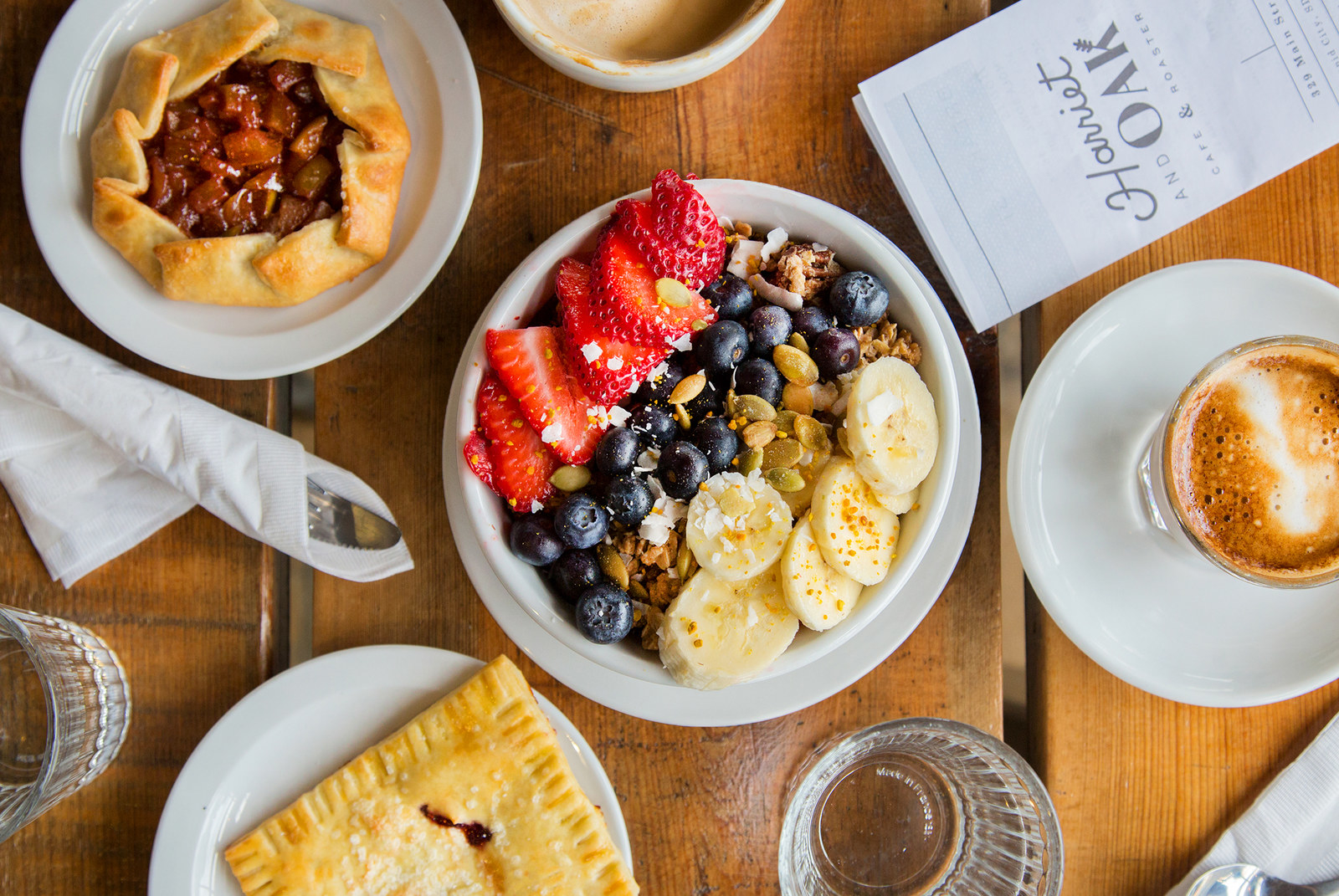
Craving a taste of regional contemporary art, we paid a free visit to the Dahl Arts Center downtown, which is run by the Rapid City Arts Council. A community arts center that also operates as a gallery, the Dahl Arts Center exhibits a rotating and wide variety of artists of all levels — youth, hobbyist, and professional. At the time of our visit, the featured exhibition was the strikingly Expressionistic paintings of a local high school art teacher. They hold frequent arts events to engage and service their community, like open mic nights and interactive arts events for children. It's also home to a unique Cyclorama Mural, an 180-foot panorama oil painting spanning 200 years of US economic history.
Just a block north on 7th Street, we found Art Alley, coated with native murals by locals, pieces from famous foreign street artists, and even the art of one precocious four-year-old. In order to paint in art alley, you must acquire a permit, Community Engagement Coordinator Tyler Read explained. The process? Simply propose an idea — no vulgarity or hate speech, and no fee. "This space will accept anybody," said Read, and even political art is encouraged. The sheriff drove through as Read was concluding our tour. "Thank you for taking care of Art Alley," he said, waving from his window.
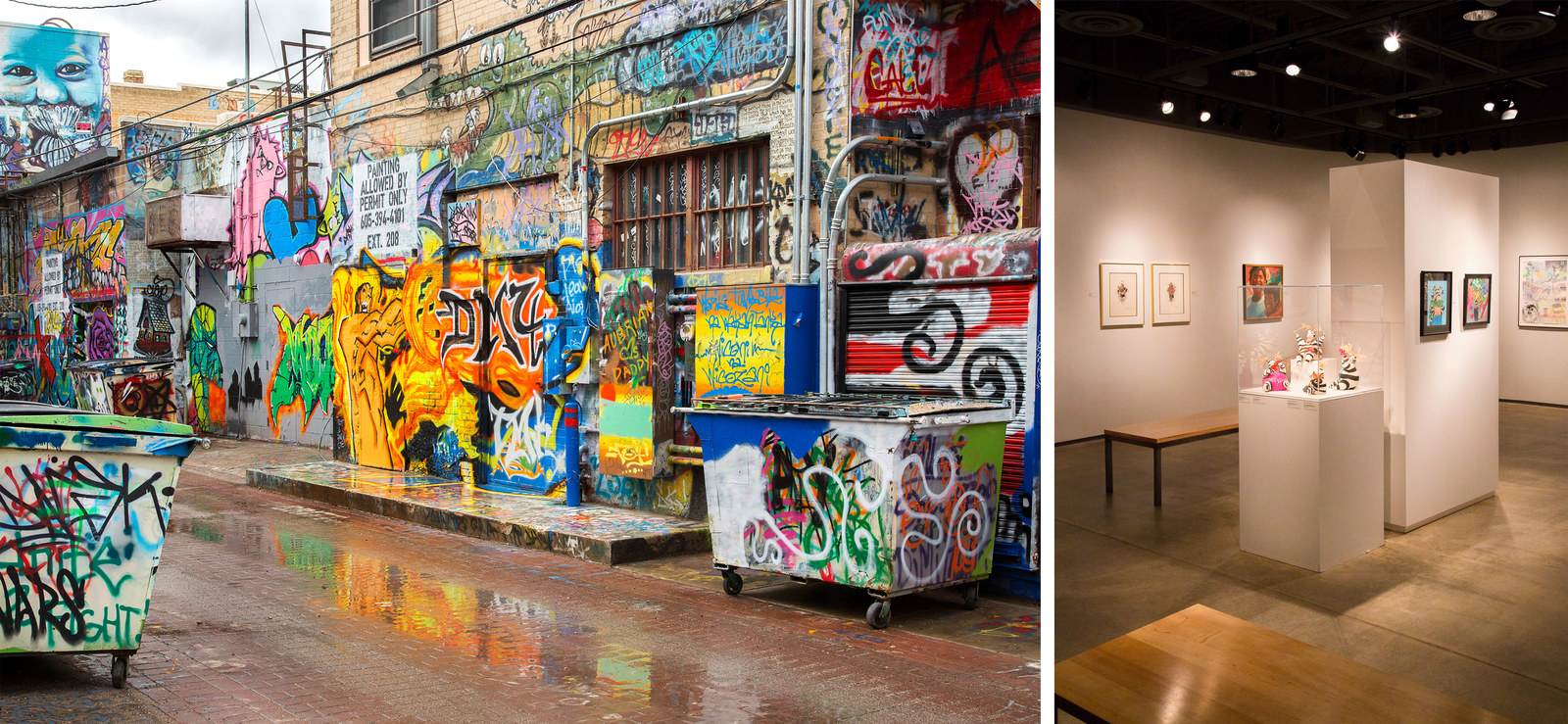
We continued our discovery of Downtown, making a pitstop into Independent Ale House for lunch and beer from their 40 taps. Since 2011, the tap house has served a wide variety of dense and flavorful thin-crust pizzas and craft beers ranging from Hawaii to Ireland to Alaska and, of course, from within South Dakota. Its motto? “If we can get it here, we’ll get it.”
We resumed our quest for beer after lunch at the oldest brewery in South Dakota: Firehouse Brewing Co. In what you might have already guessed was once a fire hall, they pour their small batches of brews directly from the tank instead of a keg. Annually, they brew around 40 unique beers and keep nine on tap, including a nice, dry cider named Teacher's Pet during our visit. Next door, Firehouse Wine Cellars produces wines from both regional and California varietals. They specialize in drier traditional wines uncharacteristic of the region, which is known for its sweet farm wines.

Still eager to try more local beers, we ventured to the outskirts of Downtown to Lost Cabin, a brewery alive with a buzzy, biker-meets-lumberjack ambience. Its focus is on barrel aging and strong Belgian ales like their malty, toffee-strong, award-winning Lord Grizzly Scotch Ale. The small, dog-friendly spot also comes complete with a food truck parked outside. "We had to choose between food and dogs, and we chose dogs," says co-owner Jesse Scheitler.
We skipped the food truck for our last meal, in Rapid City instead opting for cozy neighborhood spot and local favorite Juniper. From its simple menu, we selected and devoured refreshingly light salads, a crock of gooey, crusty French onion soup, and a perfectly executed, medium-rare filet mignon balanced with a syrah reduction — an ideal end to our journey.
Every day I spent in Rapid City, I traveled deeper beneath the deceptively level facade of South Dakota. Rapid City disclosed levels of complex and fascinating histories and the incredible cultures that shaped them, much like the layers of sediment sculpted by rivers in the Badlands. And much like my first glimpse of the Badlands, which seemed to reveal itself so suddenly out of the horizon, it took me by surprise.
Where I expected to find one tourist attraction, I stumbled upon breathtaking displays of the power of both nature and man, hardworking people who are deeply invested in their community, and even unforgettable food and beer. This is the depth and the height of Rapid City, South Dakota; it's so much more than Mount Rushmore.
Photography by Sarah Stone / ©BuzzFeed
Design by Kirby Darland / ©BuzzFeed
Visit Rapid City today. It's so much more than just Mount Rushmore.
